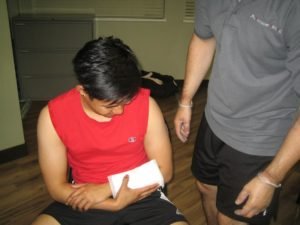When it comes to a second-degree burn, it reaches up to the epidermis that causes damage to the dermis. Once a second-degree burn only covers a small area that is less than three inches in diameter, first aid care can be carried out at home.
For second-degree burns that cover a wide area of skin or burns several areas in the body, it would require emergency care so that the affected area can be properly treated. If you want to learn more about first aid training that is available to you, click here.
Steps in managing a second-degree burn

- First, you have to identify the severity and size of the burn. In most cases, second-degree burns can be distinguished by taking note that the burn has blisters or causes intense pain. The skin usually appears red and has a splotchy look along with swelling.
- You have to thoroughly wash your hands before providing first aid care on a second-degree burn. Always remember that correct hand washing will prevent exposure of the affected area to dirt, debris and bacteria.
- Immerse the affected area using cool running water for about 10-15 minutes. You can soak the burned area using a compress if it is hard to soak under flowing water.
- Apply a sterile gauze bandage slackly over the affected area. Tape or wrap the bandage in a loose manner to prevent it from adhering to the burn.
- You can provide pain medications such as acetaminophen, ibuprofen or aspirin to help relieve the pain. These medications are readily available over-the-counter.
- Leave the affected area alone for 24 hours before the dressing is changed or checking the wound. If you will remove the bandage repeatedly, this can expose the affected area to further damage while increasing the risk for infection.
- The bandage should be changed daily and monitor the affected area during every change for any indications of infection. Swelling, redness or drainage of pus simply indicates that the wound is infected. If any of these symptoms are present, a doctor should be consulted so that the infection is treated. Once the bandage adheres on the skin, all you have to do is to soak it in cool water first to soften it before removal.
- Apply sunscreen on the burned area every time the individual is exposed to the sun for at least one year after the initial injury was sustained. Always remember that a burned area will stay sensitive to sunlight for several months after it has already healed.
Important tips to remember
Creams or ointments should not be applied on the burn unless instructed by a doctor. Butter should not be applied as well since they will increase the risk for infection.
The individual must be instructed not to break open any blisters that develop in order to prevent bacteria from entering the area under the blister. Do not attempt to treat a severe burn at home. A burn that is bigger than 3 inches in diameter must be checked by a doctor.
